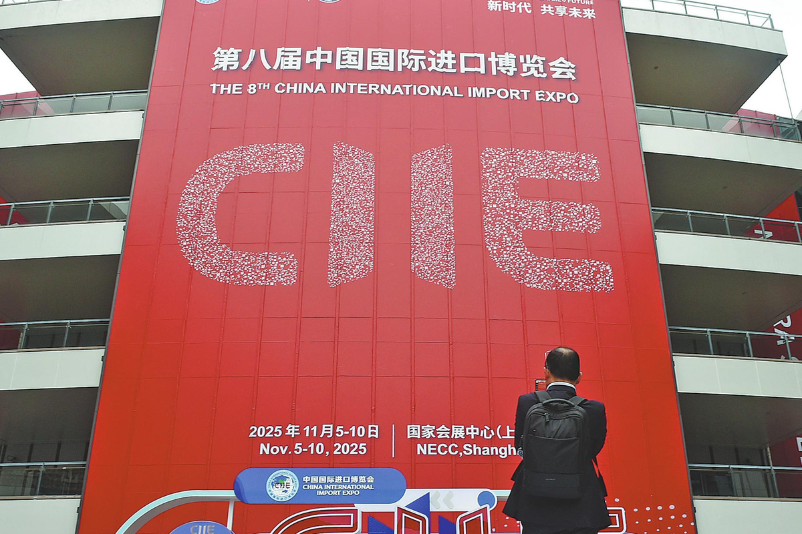Belt and Road can help US 'build back better'


When President Xi Jinping proposed the Belt and Road Initiative in 2013, he effectively shifted the global economy in the direction of rapid development, inspiring great hope particularly among developing countries.
By 2013, the Western world had more or less abandoned its interest in large-scale development projects in Asia, Africa and Latin America. And the bloated New York-London financial system brooked no activity outside of countries meeting the demands of the bankers for interest payments. But the amounts of new credits available through Belt and Road projects, targeted specifically at transportation and other infrastructure sectors, gave Asian, African and Latin American countries a new lease on life.
The Belt and Road Initiative has not only benefited developing countries, but also helped boost global trade with Europe and the United States.
The notion of new infrastructure programs sat well with Americans so long as it was aimed at modernizing US roads and railroads. While the reaction of the US administration to the Belt and Road Initiative was quite tepid in the beginning, it has shown some interest in learning from the initiative, as it could benefit the US. So a number of think tanks began studying its operations, with some discussions being held at the US State Department with Chinese interlocutors to see if and how the US could cooperate with the Belt and Road Initiative.
Many US companies in Fortune 500, such as Honeywell, Caterpillar and General Electric, began joining Belt and Road projects in a big way in Asia and elsewhere, with Caterpillar even issuing its own "white paper" praising the opportunities offered by the initiative to American enterprises.
Even in the early days of the Donald Trump administration, there was a possibility that a Belt and Road Initiative-induced "boost" might help him move forward with his own infrastructure building ambitions. But Trump's obsession with the "trade deficit" with China led him to impose unjustifiable, even punitive, trade tariffs on Chinese goods.
And when the novel coronavirus hit the US, a frantic Trump went "off the rails", calling it the "China virus". At the same time, the anti-China lobby in the US Congress began hearings, in order to label the Belt and Road Initiative as a Chinese power play.
As the paranoia about "China's rise" grew stronger, US policymakers claimed that they would restore US infrastructure on their own strength. And now, the "Build Back Better" plan has become the slogan of the Joe Biden administration.
But very little of this "building" is anywhere near taking shape, much less shovel-ready. Given the political chaos within the US public over the issues of race, environment, and even the legitimacy of last year's presidential election, "building back" could be a long time coming.
Knowing that the US will not meet the pace of Chinese development any time soon, some in the US Congress and administration are trying to undercut any advances that might be made by China in the economic and political arena.
If this policy is not changed soon, it will lead to a serious military conflict between the two major powers, a conflict which could result in a defeat for the US or in the much feared "mutually assured destruction" scenario that has hung over the world ever since the development of nuclear weapons.
Ironically, the solution to the real problems facing the US, and the only way for it to quickly "Build Back Better" is to cooperate with, rather than sabotage, the Belt and Road Initiative. The invitation to the US to join the Belt and Road Initiative is still open, and would help it rebuild its own crumbling infrastructure much more rapidly than it could ever do through its own efforts.
Using existing supply chains, many of which are intimately intertwined with the Chinese economy, tapping into the knowhow of China, which has become a leader in areas such as high-speed rail, and increasing the contacts between the two sides' engineers and scientists, would facilitate the type of projects by which the US economy could be revived: things like tackling the drought on the West Coast through nuclear desalination, learning how to "green" the desert, and building a high-speed rail grid.
Given the current US attitude toward China, this will not be easy. But if the US takes certain areas in which cooperation can immediately be initiated, as it has been doing in the area of climate change, such collaboration could help restore the sense of trust between the two sides. And by doing so, the US could make China a partner, as opposed to a rival, and quicken the pace of "building back" the tattered US economy.
The author is a Washington-based policy analyst and a non-resident fellow at the Chongyang Institute for Financial Studies, Renmin University of China.
The views don't necessarily reflect those of China Daily.
If you have a specific expertise, or would like to share your thought about our stories, then send us your writings at opinion@chinadaily.com.cn, and comment@chinadaily.com.cn.


































